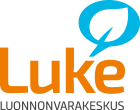The EU Directive 2008/120/EC sets standards for the protection of production pigs, including the prohibition of tail docking as a routine procedure. Most Member States allow tail docking when all other measures have been taken to prevent tail biting – and this exception is applied on very light grounds and virtually all pig farms. Finland’s national legislation has banned tail docking completely since 2003.[1] Tail biting always indicates that the pig is stressed. Hence, the tail acts as an indicator of pig welfare.
Commission Recommendation EU 2016/336 provides measures to achieve the objectives of the Directive. In its recent report[2], the EU Commission notes that, of the Member Countries, only Finland and Sweden, and of non-Member Countries, Norway and Switzerland, have succeeded in breeding pigs with tails. This success is due to maintaining high standards with regard to many of the related recommendations. These factors include access to rooting material, the correct temperature and air quality, a good state of health, feeding and reducing competition for fodder and space. The results and experiences of study visits to Finland, Sweden and Switzerland are summarised in the report.
Finland’s success, which is recognised and significant even on a European scale, is based on long-term systematic work. In Finland, animal health is basically good due to the northern climate, the reasonably low density of livestock farms, and long distances. In addition, long-term preventive health care has been practiced here. Significant swine diseases have been eradicated through voluntary activities in the sector (e.g. atrophic rhinitis, porcine enzootic pneumonia, mange and pig dysentery). The industry has also adopted guidelines stricter than the statutory ones for controlling PRRS disease, due to which the disease has been prevented from entering Finland.
A wide range of factors, including competition for space and food, temperature and ventilation, flooring, environmental enrichment and continuously available clean drinking water, have an impact on animal welfare. High-quality optimised feed is essential during the various phases of production.
Finnish legislation specifies minimum space requirements according to the standards set in the EU directive, but in actual fact, large operators require their contract producers to provide space per pig well above the minimum level of 0.65m2/ pig, i.e. 0.8-0.9m2 per pig.
Pigs need access to environmental enrichment, or rooting material, which in Finland is mainly straw, sawdust or peat. The EU’s statutory minimum requirement for environmental enrichment may also be met by means of a sack or chain, as is often the case in Central Europe. In Finland, special attention has been paid to this issue in recent years.[3] Many animal “toy” innovations, such as pieces of wood, ice hockey pucks suspended from a chain, ropes or garden hoses are available. According to the guidelines of the Finnish Food Safety Authority, Evira, pigs must have continuous access to rooting material, which they can pile, or organic material must be provided for them twice a day.
In Finland and Sweden, the most common feeding method is liquid feeding, which allows all animals to feed at the same time. The most common method in Germany and Denmark, ad lib fodder dispensers, allow only a few animals to be fed at a time, which easily results in competition between the pigs for food. Competitive situations, in turn, cause stress.
Slatted flooring is uncomfortable and slippery, and can easily result in hoof damage. The biggest problem with fully slatted flooring is perhaps the lack of comfortable bedding for pigs – such a floor makes it more difficult to manage drafts and gases from manure, for example. On the other hand, if the gap in the slatted flooring is narrow in relation to the width of the beam, it is easier to keep the bedding dry and there is less effect on the comfort of bedding.
Fully slatted flooring also allows the use of bedding without it immediately falling into the manure pit. Some farms distribute hay/straw from so-called hayracks on the wall of the pen, which has proven a good solution. Few farms in Finland have pen systems with fully solid flooring, because they are very difficult to keep clean and dry. Most farms therefore use partially slatted flooring in pens, with 30-50% of the floor solid and the rest slatted, for example.
The EU Commission’s report 2016-8987 states that improvement measures have been taken in several Member States, such as Germany, France, Holland and Denmark, inspired by study tours in Finland, Sweden and Switzerland. In addition to pilot projects and surveys, Denmark and Germany are preparing a national welfare labelling system.
In 2013, the Finnish Food Safety Authority Evira adopted the quality system based on the Sikava health care system as the first national quality system compliant with the Food Act, labelled “Quality Assurance” for consumers. It comprises measures taken by the industry which significantly exceed the statutory requirements in terms of animal health and food safety.
The Sikava system defines more stringent guidelines than the legislation for the import of animals, feed, embryos and sperm. Approximately 95% of pig meat production in Finland is committed to compliance with the Association for Animal Disease Prevention ETT guidelines and Sikava regulations. Animal health and welfare on farms is assessed through regular veterinary visits. The need for antibiotic medication is very low in the pig sector. Quality assurance signifies animal welfare through animal health.
References
[1] Directorate-General for Internal Policies: Routine tail-docking of pigs, document requested By the committee on petitions, Link to report
[2] European Commission, Health and food audits and analysis, Overview report on Rearing Pigs with Intact Tails, Link to report
[3] Telkänranta, H. Research results on pig enrichment, Helsinki University, Link
